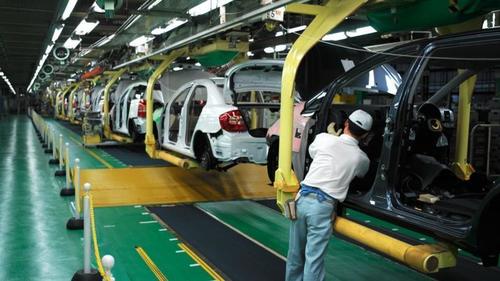Jun 2 2013
Article on “Lean warehouse” off the mark
See on Scoop.it – lean manufacturing

This article is all about the efficiency of warehouse operations and the way “Lean” can reduce warehouse labor. It says almost nothing about the effectiveness of warehouse operations. From this article’s perspective, driving an empty forklift is a waste to be eliminated, but there is not a word about using other means than forklifts to move goods, in perhaps less than pallet quantities, such as carts or small trains. There is not a word either about locating frequently used items in the locations that are easiest to reach, or collocating items that are frequently used together…
At least in manufacturing operations, the number of people used in warehouse operations is a tiny fraction of the number used in production, and increasing their productivity is not the issue. A Lean implementation may instead increase their numbers to improve service and achieve much larger productivity gains in production.
The pursuit of fully loaded forklifts and trucks may increase the efficiency of storage, retrieval, and transportation operations, but also delay e deliveries and hurt the performance of the business as a whole. This is not just my own observations. It has been described as a systematic phenomenon by researchers like Hau Lee.
See on www.dcvelocity.com



Jun 4 2013
Enterprise Ireland and Lean | Irish Times
See on Scoop.it – lean manufacturing

“The Japanese are renowned worldwide for their car production where the concept of the management philosophy Lean derives from. It all began at Toyota when the car manufacturers discovered a new, more efficient method of producing cars valued by customers all over the world. The principles learned at Toyota became known as Lean which is claimed can be applied to almost any business. The core principle is creating value by reducing waste and unnecessary risk.”
While informing us that the Irish government has an agency promoting Lean, this article reflects common misconceptions.
No, it’s not a “Japanese management philosophy.” it is an approach developed by individuals who happened to be Japanese, which is not the same. Most Japanese today do not know or practice it, and quite a few non-Japanese do.
And this emphasis on “creating value” is an American talking point, not the Toyota Production System.
According to the article “Toyota benchmark themselves constantly,” which is news to me. While it is clear that Toyota is on the lookout for new ideas, I had not heard of Toyota doing benchmarking surveys of competitors. My understanding is that Toyota’s management considers such surveys to be a waste of time.
The article equates Lean with Continuous Improvement, giving the impression that it’s all there is to it.
And finally, the article repeats the Business Week claim that the Shingo Prize is “the Nobel Prize for operational excellence.”
See on www.irishtimes.com
Share this:
Like this:
By Michel Baudin • Press clippings 0 • Tags: Japan, Lean manufacturing, Shingo prize, Supply chain, Toyota, Toyota Poland, Toyota Production System